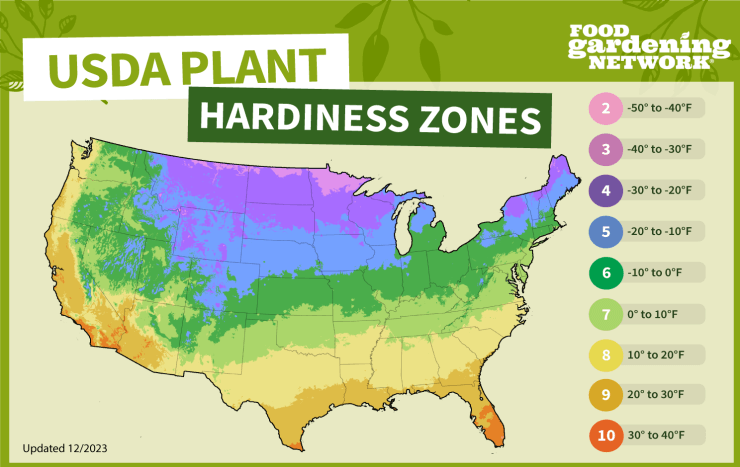Beets are cool-season vegetables that are relatively tolerant to various growing conditions. They can be grown in a wide range of USDA Plant Hardiness Zones, from zones 2 to 10. Here are some examples of U.S. states within these recommended growing zones:
Zone 2: Some states in this zone are:
- Parts of Alaska
- Parts of North Dakota
- Parts of Montana
Zone 3: Some states in this zone are:
- Minnesota
- Parts of North Dakota
- Parts of Montana
Zone 4: Some states in this zone are:
- Maine
- Michigan
- New Hampshire
- Vermont
Zone 5: Some states in this zone are:
- Illinois
- Indiana
- Iowa
- Ohio
- Parts of New York
- Pennsylvania
Zone 6: Some states in this zone are:
- Maryland
- Massachusetts
- Missouri
- New Jersey
- North Carolina
- Tennessee
- Virginia
- West Virginia
Zone 7: Some states in this zone are:
- Arkansas
- Delaware
- Kentucky
- Oklahoma
- South Carolina
- Parts of Georgia
- Texas
Zone 8: Some states in this zone are:
- Alabama
- Florida
- Louisiana
- Mississippi
- Parts of Georgia
- South Carolina
- Texas
Zone 9: Some states in this zone are:
- Arizona
- California
- Parts of Texas
Zone 10: Some states in this zone are:
- Hawaii
- Puerto Rico
Keep in mind that beets prefer cooler temperatures for germination and early growth, so they tend to perform better in the cooler end of their recommended growing zones.
Growing beets indoors is possible to some extent, but it may not be as productive or straightforward as growing them outdoors. Beets develop long taproots, and while young plants can be started indoors and later transplanted outdoors, they can become stunted if grown in containers for an extended period.
If you want to grow beets indoors, consider using large containers with ample depth to accommodate the taproots. Provide them with at least six to eight hours of sunlight or use full-spectrum grow lights to supplement their light needs. Remember that beets prefer cool temperatures, so ensure that indoor temperatures remain in the cooler range. While growing beets indoors can be a fun experiment, for a bountiful harvest, it’s generally more practical to grow them outdoors in the appropriate season.
Check out the USDA Plant Hardiness Zone Map and find out what zone your zip code is located in here. Or you can use our map to get a general idea of what your plant hardiness zone is.



 Previous
Previous

